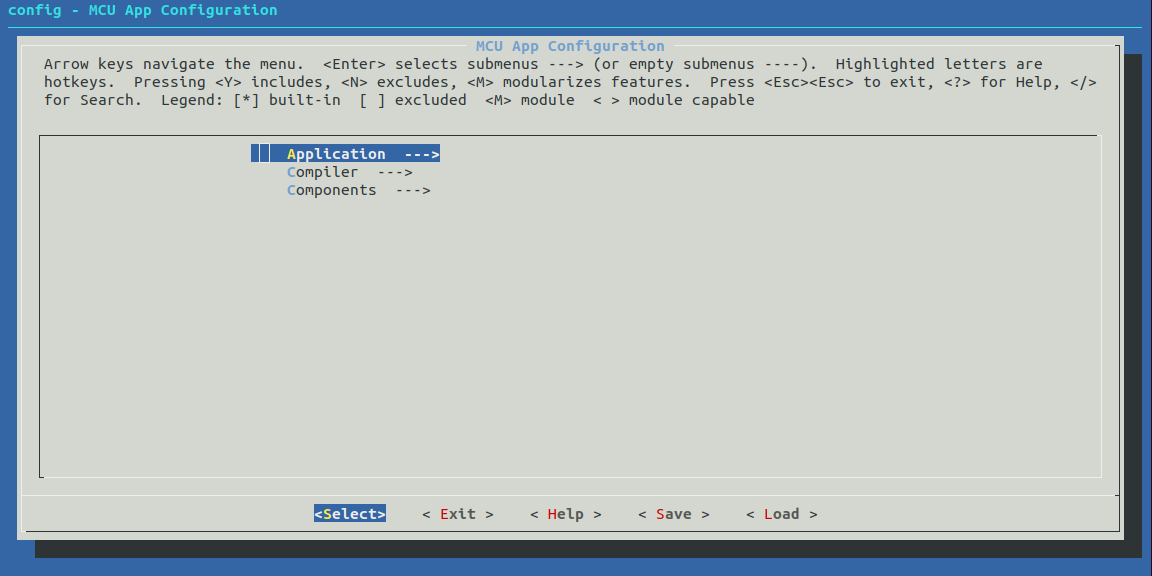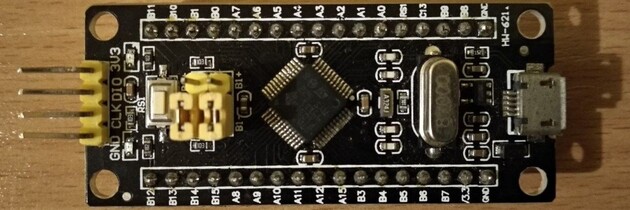Kconfig for embedded applications
This example provides the ability to configure components and application
using kconfig language
 Originally created for STM32 Black Pill but it can be used for any MCU
Originally created for STM32 Black Pill but it can be used for any MCU

Development environment consists of:
Install
sudo apt install bison flex
Get GNU Arm Embedded Toolchain
sudo apt install gcc-arm-none-eabi
arm-none-eabi-gcc --version
Alternative way is to download Arm GNU Toolchain and setup path to compiler binaries by adding the following line into ~/.profile with your path to toolchain folder:
export PATH="$PATH:$HOME/path/to/gcc-arm-none-eabi-8-2019-q3-update/bin"
Log out and log back in to update PATH variable
Get project and build
git clone https://github.com/mcu/kconfig.git
cd kconfig
make menuconfig
make
make clean
make -f scripts/Makefile clean
How it works
At first, ‘make’ utility use ‘ls’ command recursively to create a list of all folders in the ‘components’, ‘application’. Then ‘make’ creates a list of all *.s, *.c, *.ld and *.a files into variables CBMXASRC, CBMXLD, CBMXOBJS… After that ‘make’ starts the process of compiling cubemx, components, application sorce files in parallel, linking and generating binary file. It’s easy but more correctly is to build components separately into libraries (for advanced developers https://github.com/mcu/kconfig-libs).
You can change cubemx source files using STM32CubeMX program or replace cubemx folder with your own, small changes need to be made to the Makefile.
You can also add *.h, *.c files and folders as you want into “components”, “application” folders. All source files will be compiled
Comment
Implementation of makefile has its pros and cons. Since all header files are visible to each source file during the build process it is not recommended to use this example for large projects